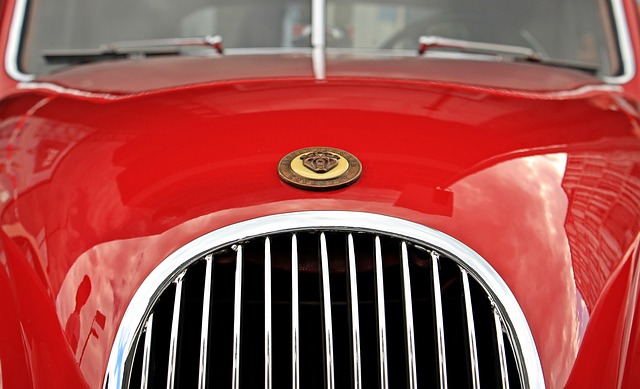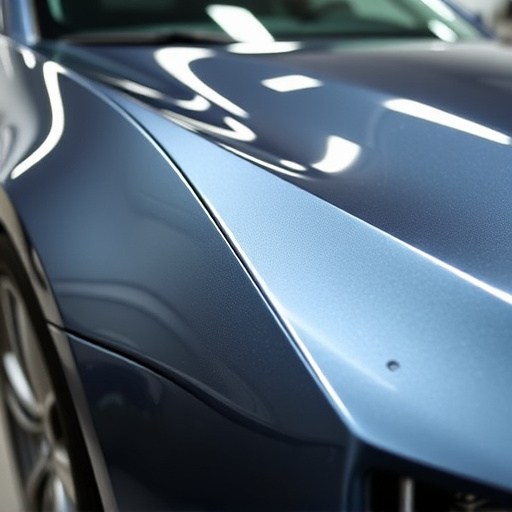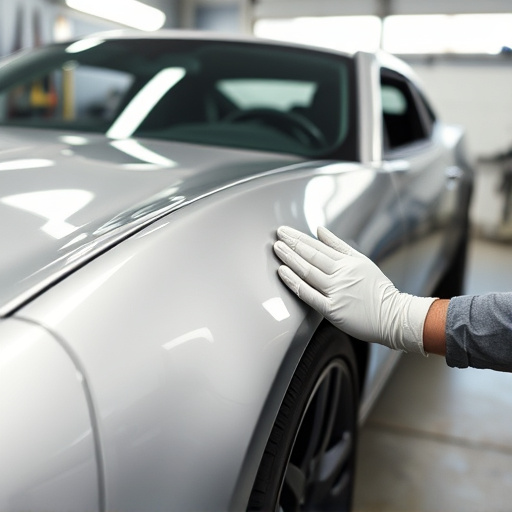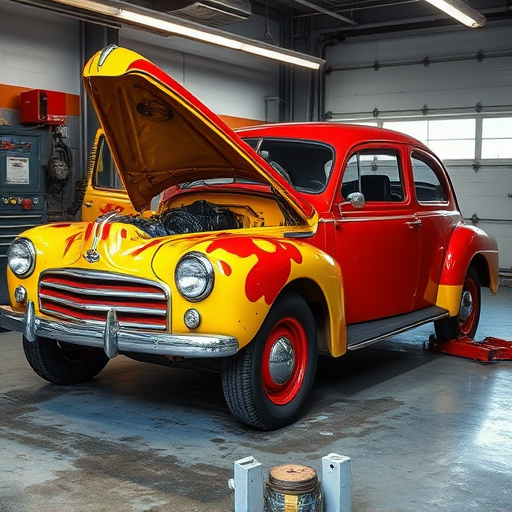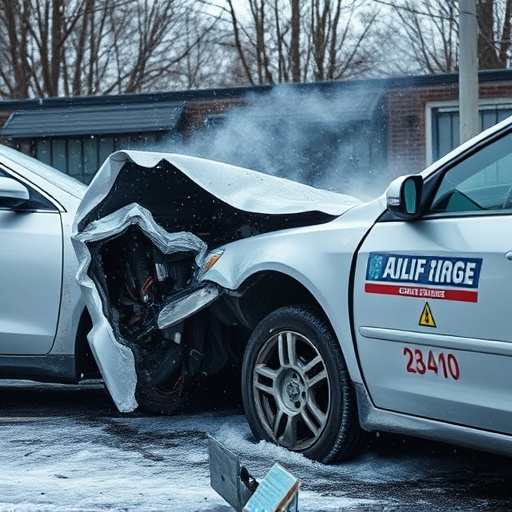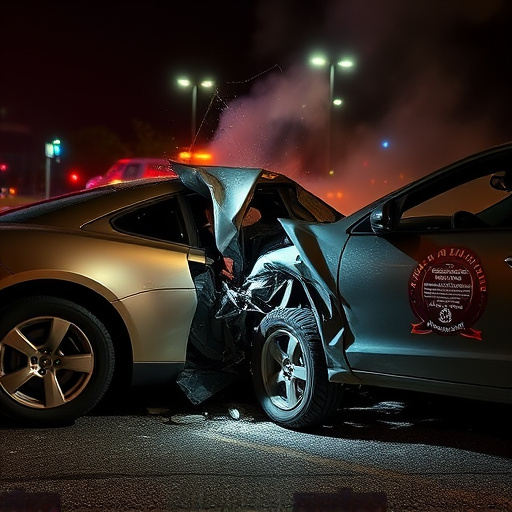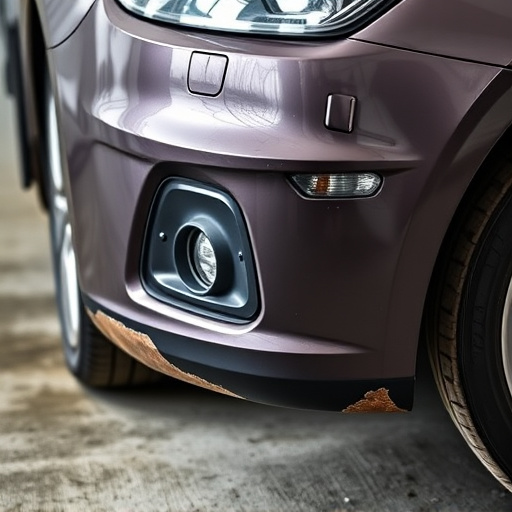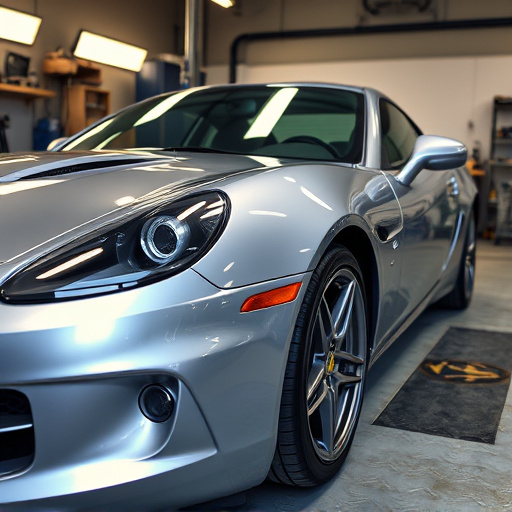Clear coat application enhances vehicle paint protection and aesthetics with polyurethane, acrylic, or blend options. Environmental factors, intended use, budget, and desired finish guide selection. Professionals advise on choosing the right clear coat for specific needs and optimal results. Proper preparation, application technique, and drying ensure a high-quality, protective finish.
Choosing the right clear coat for your vehicle is an essential step in protecting and enhancing its finish. This guide breaks down the process into three key sections: understanding different types of clear coats, factoring in specific needs, and mastering the application techniques. From automotive-specific formulas to surface preparation, learn how to select and apply a clear coat that not only protects but also adds a glossy, durable layer to your car’s exterior, ensuring long-lasting protection against UV rays, dirt, and scratches.
- Understanding Clear Coat: Types and Their Properties
- Factors to Consider When Choosing a Clear Coat
- Applying the Clear Coat: Techniques and Best Practices
Understanding Clear Coat: Types and Their Properties
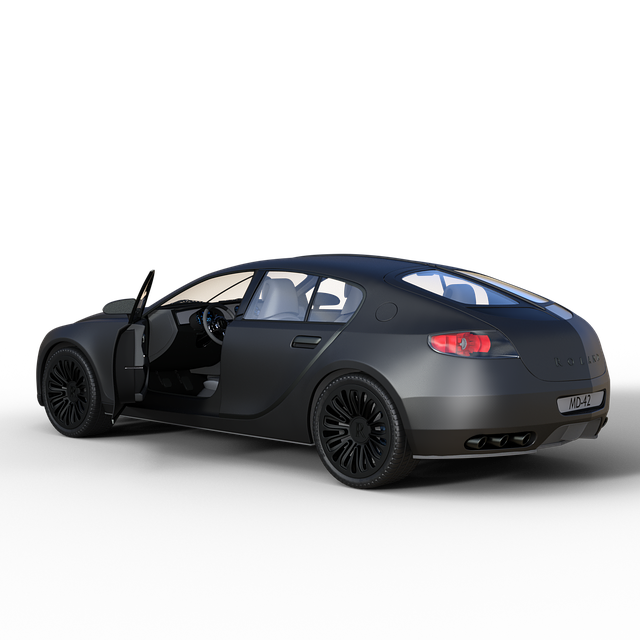
Clear coat application involves a protective layer that enhances the finish and durability of your vehicle’s paint job. Understanding the types of clear coats available is key to choosing the right one for your car or truck. The most common types include polyurethane, acrylic, and polyurethane/acrylic blends. Each offers distinct properties: Polyurethane coats provide excellent clarity, chip resistance, and long-lasting durability; Acrylics are known for their fast drying time and ease of application; while polyurethane/acrylic blends combine the best of both, offering high performance and versatility.
When considering a clear coat, remember that factors like your vehicle’s environment (sun exposure, humidity), intended use (daily driving vs. show car), and budget will influence your decision. At a collision center or car body shop, automotive repair professionals can guide you in selecting the ideal clear coat application to protect and enhance your vehicle’s exterior, ensuring it looks its best for years to come.
Factors to Consider When Choosing a Clear Coat
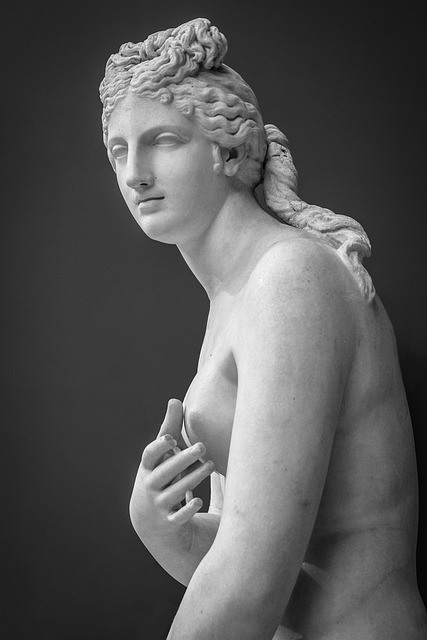
When selecting a clear coat for your vehicle’s clear coat application, several key factors come into play. First and foremost, consider the type of finish you desire—matte, semi-gloss, or high gloss—as this will impact both aesthetics and durability. The environment in which your car spends most of its time is another critical aspect; those in harsh weather conditions may require a clear coat with better resistance to UV rays and oxidation.
Additionally, the extent of any prior auto body restoration or automotive repair, including car collision repair, should influence your choice. If there are existing scratches or dents, a harder, more resilient clear coat might be necessary to ensure an even, long-lasting finish. Always consult with professionals who can guide you based on your vehicle’s specific needs and the desired outcome of the clear coat application.
Applying the Clear Coat: Techniques and Best Practices

Applying a clear coat is a crucial step in achieving a seamless and protective finish for your vehicle’s paint job. The technique involves careful preparation and precise application to ensure an even, glossy coating. Start by ensuring the surface is clean and free of any debris or contaminants. This may involve a thorough wash and de-greasing process, especially if you’re performing auto frame repair or car body restoration work.
Use a smooth, soft brush or a spray gun for clear coat application, depending on the extent of the vehicle repair services needed. For larger areas, a spray gun offers even coverage, but for smaller, more detailed sections, a brush provides better control. Maintain a consistent distance from the surface to achieve a uniform thickness, and be mindful of overlapping strokes to avoid visible lines or imperfections. Allow each coat to dry as per the manufacturer’s instructions before adding another layer, ensuring an optimal finish that enhances your car’s appearance and protects its body throughout various weather conditions.
Choosing the right clear coat for your vehicle involves understanding its types, considering specific factors, and mastering the application process. By delving into these aspects, you can ensure a protective and aesthetically pleasing finish that enhances your vehicle’s value and longevity. Remember, proper clear coat application is key to achieving a professional, long-lasting result.
